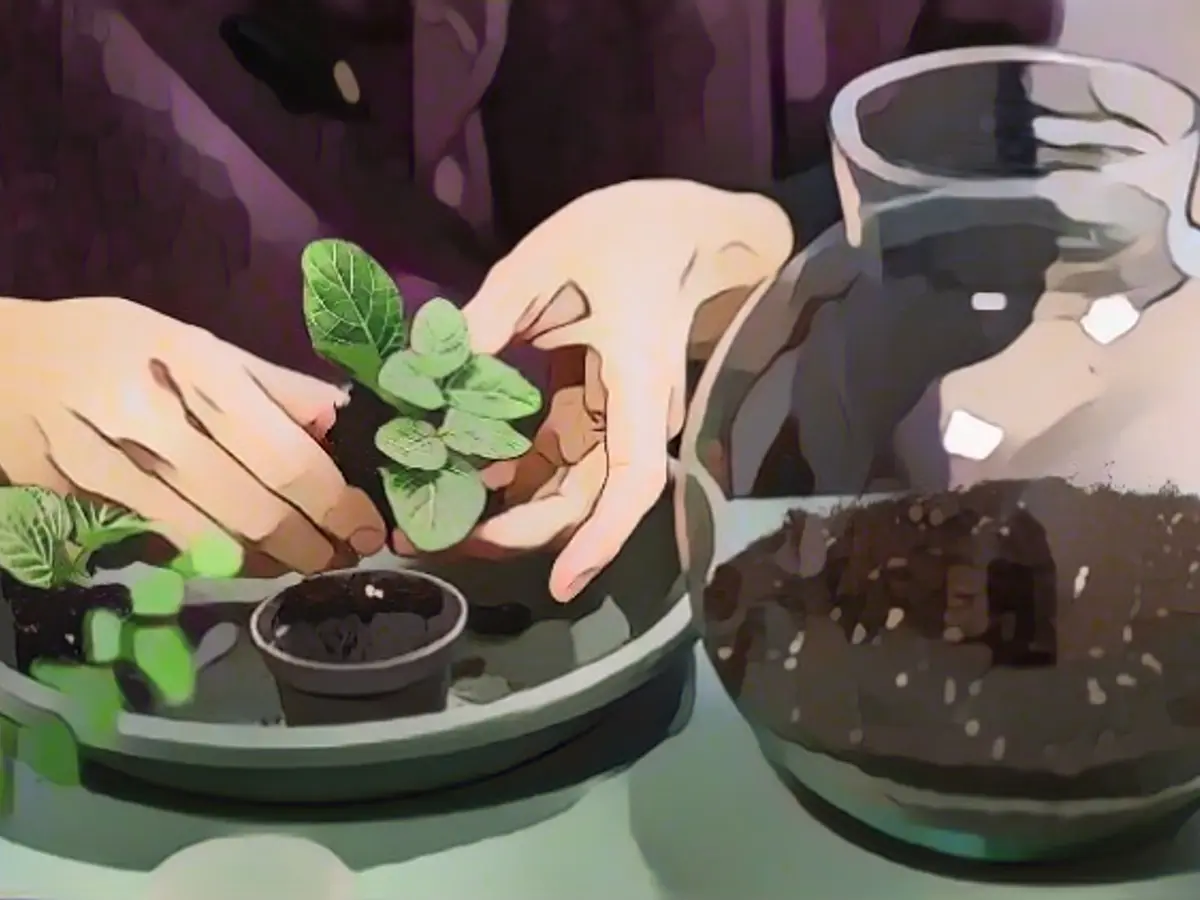The bottle gardens return
They are easy to care for and also suitable for people without green fingers: Mini gardens in wake-up or candy jars. What's behind the trend? On the trail of the little jungle.
They were a trend in the 70s - and now bottle gardens are back. Frenchwoman Aurelie Morgen discovered the plant terrariums for herself years ago. Her workshop in Berlin is reminiscent of a botanical garden in miniature. Tiny ivy climbs up in a glass jar, alongside exotic mosaic flowers, coffee plants, wicker marants and mosses. The mini gardens grow in Weck and candy jars and other bulbous or angular containers. "They are particularly suitable if you don't have much space in your home," says Morgen.
Biologist Ulf Soltau also has dozens of bottle gardens in his home. He is known to many for his "gardens of horror" on social media platforms: There he collects pictures of gravel gardens and makes the case for natural gardens. He discovered bottle gardens in the 1990s, says Soltau.
The exotic plants grow in closed jars, only need to be watered once or twice a year and fertilized very sparingly. "They should grow slowly and remain as small as possible," says Soltau. "They are small ecosystems on the back burner."
He also calls the mini-gardens "hermetospheres" to make it clear that they are closed systems. "In the 1990s, the topic was considered outdated and out of fashion," says the biologist. In the meantime, bottle gardens are back in fashion. "The coronavirus pandemic gave them another boost. Today you can buy them in almost every DIY store."
Self-sustaining water cycle
Aurelie Morgen makes such bottle gardens. She is the owner of "Petite Jungle", a Berlin-based manufacturer of bottle gardens. In courses, she shows interested people how to create small ecosystems from plants, stones and substrate. These form a self-sustaining water cycle in a closed container.

"The heat causes the plants to sweat and release water, which condenses on the cooler glass wall and flows back into the soil drop by drop," explains Morgen. The participants are not just those looking for low-maintenance greenery. People who already have a lot of plants and want to learn new techniques also come to the courses. "Some also have tropical plants at home but find it difficult to keep them happy."
Morgen herself gave up her job as a landscape architect years ago to work more with her hands again, she says. The small gardens are well suited to this, Morgen explains as she works on a new terrarium with a spoon, tweezers and funnel. She uses a tamper, homemade from a cork and a shashlik skewer, to compact the soil. She then places planting holes in order to fill them.
The forerunners of bottle gardens
Transportable greenhouses made of wood and glass, popularized by the English doctor Nathaniel Ward almost 200 years ago, are considered the forerunners of bottle gardens. In spring 2010, Ward's boxes, which had been unused for decades, were found in an attic of the Berlin Botanical Garden.
"As inconspicuous as their appearance may seem at first glance, the invention of Ward's boxes cannot be overestimated," write Kathrin Grotz, then Head of the Exhibitions Department, and Walter Lack, Director of the Botanic Garden and Botanical Museum Berlin-Dahlem, about the find.
"The new transport method not only revolutionized the business of commercial plant collectors and hunters who were on the move on behalf of wealthy enthusiasts or large nurseries," the experts report. It also accelerated the global exchange of important crops in the interests and on behalf of the European colonial powers.
According to exhibition director Susanne Feldmann, one of the two boxes owned by the museum is expected to be on display in the Botanical Museum's new permanent exhibition in 2025. There it will be shown as a key object for the history of the "Botanical Central Office for the German Colonies".
The center in Berlin once supplied botanical experimental stations in the tropics with young plants and seeds so that the cultivation of plants from all over the world that were important for the colonial economy could be tested there. The crates were used to transport the plants.
Inspiration in the botanical garden
Aurelie Morgen is always out and about in the Botanical Gardens, where she finds inspiration. For example, she looks at which plants remain small-leaved. These are particularly suitable for the mini gardens, she explains.
Other bottle garden fans also offer courses, ready-made gardens or accessories throughout Germany, such as Christian Hellbusch from Hamburg. He himself came up with bottle gardens because he wanted tropical plants that he could leave out for a few months, he says. Especially now in the colder months, people are more likely to take the time for this hobby.
Read also:
- Floods: water levels remain critical in many places
- Snow chaos further restricts Bavaria
- Continuous operation in the flood areas
- Flood situation remains tense in many places
The trend of bottle gardens has gained international attention, with German workshop owner Aurelie Morgen leading the way in Berlin. Her botanical miniature garden is a testament to the variety of plants that thrive in these enclosed ecosystems, such as ivy, exotic mosaic flowers, coffee plants, wicker marants, and mosses.
The resurgence of bottle gardens is not limited to Berlin; biologist Ulf Soltau also houses dozens of them in his home. Soltau, known for his advocacy for natural gardens on social media, discovered bottle gardens in the 1990s and sees them as small ecosystems that remain self-sustaining with minimal care.
Source: www.ntv.de






